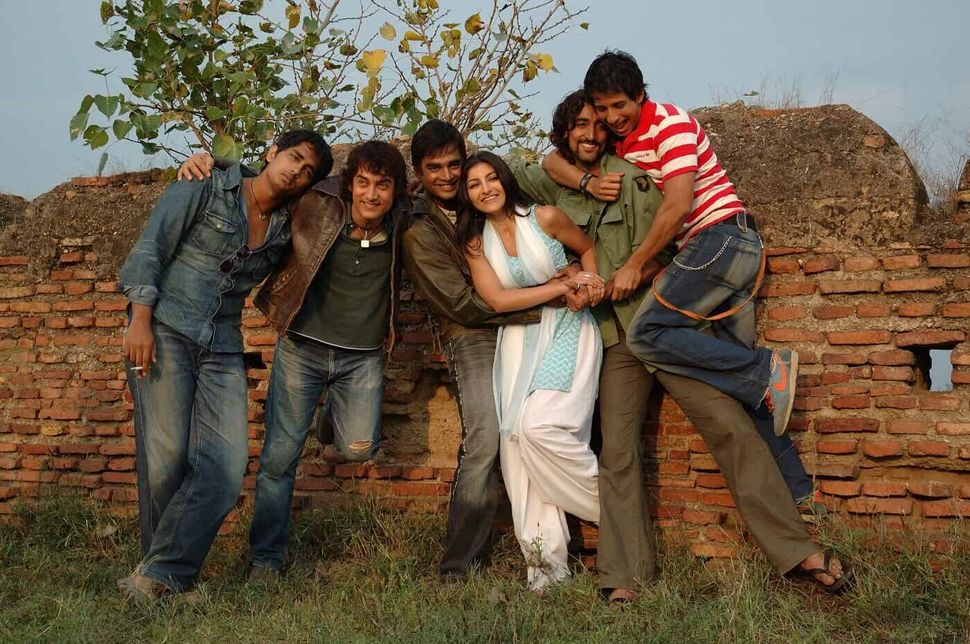
In the winter of 2005, a nervous Rakeysh Omprakash Mehra stood inside a government-run auditorium at Madhav Rao Scindia road in Delhi, his voice shaky, his legs unsteady. Rang De Basanti, the director’s second film, featuring an impressive ensemble that included Aamir Khan, had been cleared by the Central Bureau of Film Certification (CBFC), then headed by actor Sharmila Tagore. But the filmmaker had hit a bigger hurdle. The movie had to get approval from the Indian Air Force (IAF), which the film looked at with a critical lens. The IAF had specific demands that would all but take the meat out of Mehra’s film, which was about a bunch of Delhi University students who have a moral awakening after acting in a documentary about freedom fighters.
Members of the Air Force, along with the then-Defence Secretary, had already watched the film once at the Raksha Bhavan and expressed their displeasure over the makers’ decision to call MiG fighter planes ‘MiG fighter planes’ and the Defence Minister well, ‘Defence Minister’. They asked him to replace the real names with something else.
“Do I call the MiG plane an Atlas Cycle?” Mehra, who was on the verge of tears, lamented to his team. His producer, Ronnie Screwvala, consoled him and informed the IAF, in writing, that they would not be making the changes. The Air Force shot back, arguing it’s only a matter of a ‘little dubbing here and there’. Fittingly, team RDB refused. The film was about standing up to the establishment, not bowing down to its arbitrary diktats. They were prepared to go to the court if the Air Force stood its ground, even if that meant delaying the film by six months.
While the stand-off went on, CBFC chief Tagore had an idea, albeit a risky one: why not show the film to the Defence Minister himself? It was a time, Mehra recalled, when the CBFC stood up on behalf of filmmakers. An appointment with then Defence Minister Pranab Mukherjee was sought and received. The venue would be at a government-run screening room at Madhav Rao Scindia road in New Delhi. A bunch of people from the team, including Aamir Khan, flew down to Delhi for the screening. Tagore was present too and Mehra recalled that the tension in the room was palpable. The movie, in case some readers have forgotten, has a scene where the Defence Minister’s visage is conflated with that of General Dyer; in a subsequent scene he is murdered. When the team reached the auditorium, they saw it wasn’t just the Defence Minister and his entourage. The Chiefs of Army, Navy and the Air Force, along with their wives, were present too.
Mehra, a bundle of nerves, introduced the film. “I couldn’t speak,” Mehra, now 57 years old, recalled. “I was stuttering. All my heroes were there. It’s a blur to me.”
He managed to say something about how showing the film to his real-life heroes was the proudest moment of his life. “Please enjoy the movie. It’s made for airborne warriors,” he mumbled.
Almost three hours later, the screening ended. As the team tensely awaited the Defence Minister’s verdict, Mehra recalled that Mukherjee was surprisingly calm—he said he liked the film. And? Could they go ahead with the release?According to Mehra’s recollection, he said, “I’m the Defence Minister of the country. My job is to defend the country, not to censor films.”
Mukherjee left, leaving the three defence chiefs, all uniformed, in the room with the team. The Chief of Air Force said the film was “perfect” and that it speaks for the soldiers, Mehra remembered. But, he added, they were hesitating about giving the film a green signal. Tomorrow morning, the Air Force chief argued, after your movie releases, what if a pilot’s mother asks me, why is my son flying a MiG-21, what will I tell her?
To which Mehra replied, “Sir, why don’t you change the fleets?” In return, he was told about the money it would cost to replace the aircrafts.
Minutes later, the director found himself sharing a cigarette with the Air Force PRO, who himself had been a Wing Commander. Reading the mood of the room, Mehra sensed that watching the movie had turned out to be a very emotional experience for them too. After a bit of back-and-forth, they agreed to the film’s release, on one request: to add a title card on the number of MiG airplanes that had crashed, something the team had already planned on doing. “But the data that you have is wrong,” the PRO said, adding that far more MiGs had crashed than publicly reported at the time.
As per the title card that was attached with the film, 206 MiG planes had crashed and 78 pilots had died between 1990 and 2005 alone.
Originally planned for a January 19, 2006, release, Rang De Basanti opened in cinemas on January 26, India’s Republic Day. It was a thunderous success, earning over Rs. 50 crores at the box-office.
A Symbol of Resistance
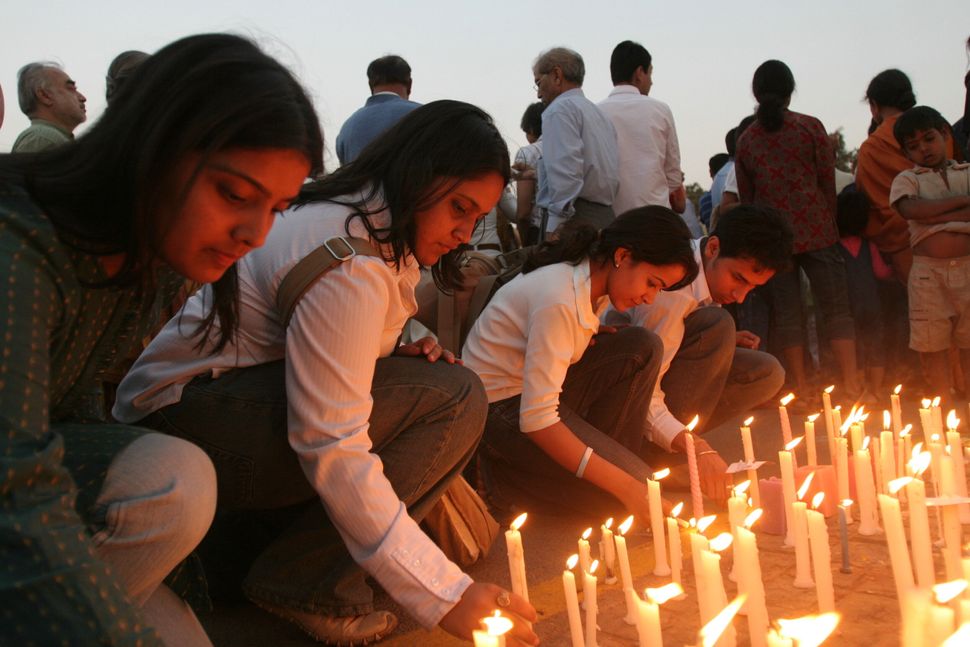
It’s relatively rare for a Bollywood film to trigger a mass movement. On February 21, around a month after Rang De Basanti’s release, a Delhi court acquitted all nine accused in the murder of Jessica Lal. Lal was shot dead by Manu Sharma, son of former Union minister Vinod Sharma, at a party in April 1999. The verdict led to considerable outrage, spurred on by a dogged focus on the case by TV channels and newspapers.
Recreating a scene similar to one in Rang De Basanti, thousands of people in Delhi marched to India Gate for a candlelight vigil, demanding accountability from the establishment. This was a time when hashtags were yet to be coined and Facebook wasn’t there to help facilitate protests (or hate speech). Most political protests at the time were mobilised through physical campaigns, posters and the telephone. According to news reports from the time, the 2006 vigil was mobilised largely through SMS campaigns by savvy citizens and, according to this piece, by bloggers who galvanised the rage of that moment and channeled it into a civic discourse.
It was a case of life imitating art. At the protests, Jessica Lal’s sister took the stage, demanding that the case be reopened.
“There was no mistaking the anger, the yearning for something purer, the sarfaroshi ki tamanna. It was exhilarating to see the middle class break its insular threshold. Yet a curious undercurrent of theatricality under-ran the entire evening. Several people who took the mike that day referred to Rang De Basanti: at times it seemed more than the injustice itself, the film was their inspiration. It had not just intuited a latent public mood; in a curious twist, it had become the mood itself,” Tehelka reported at the time, as quoted in this paper.
As the protests swelled, Mehra received a call from Shoma Chaudhary, one of Tehelka’s founders, and flew down to Delhi to witness what his labour of love had triggered.
“I saw it. It was really happening. The film became a symbol. It became a movement and mainstreamed the idea of candle-light protests. India has had a history of protests but not of these kinds. It was considered a very western concept,” Mehra said. “You start your film with an idea but somewhere down the line, what you started off with morphs into other things. You can’t design that. And that’s the incredible power of movies.”
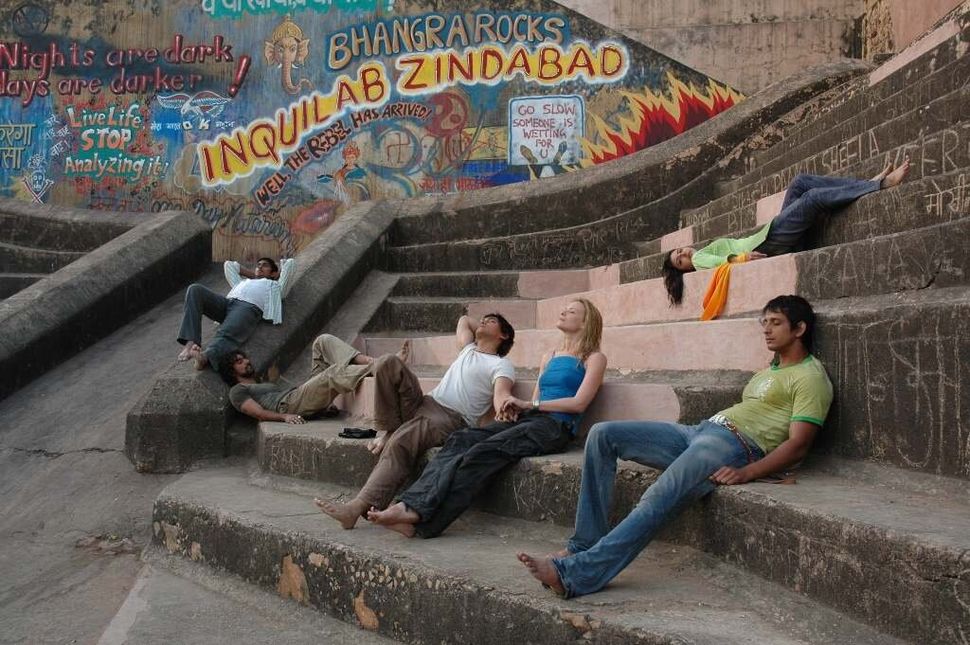
In Rang De Basanti, a bunch of free-spirited, apathetic youngsters—DJ (Aamir Khan), Aslam (Kunal Kapoor), Sukhi (Sharman Joshi), Sonia (Soha Ali Khan) and Karan (Siddharth) contextualise their present through the lens of India’s freedom struggle and come to the bitter realisation that while the colonial government may have exited the country, oppression hasn’t. It’s a film fiercely and unapologetically critical of the government, one that equates the Indian State’s corruption and apathy to that of British imperialism, sometimes metaphorically, at times literally. Like in the scene where the Defence Minister’s face is morphed onto that of Reginald Dyer, the British army officer who ordered his troops to fire on unarmed Indians at Jallianwala Bagh in 1919.
Through the characters of Aslam and Laxman (Atul Kulkarni) the film also demonstrates how communal divide is exploited by State actors who benefit from fuelling the mob. There is a scene where Aslam is called ‘Pakistani,’ an insult that has become so commonplace in the present climate of hate that it’s a meme.
In an interesting spin, the film gives Kulkarni’s Laxman a redemptive arc, a rare instance of seeing the transformation of a man from bhakt to woke, after realising that his masters, who sport long white beards and saffron scarfs, merely think of him as an inconsequential foot soldier. His realisation comes after he sees the Delhi Police attack peaceful protesters (clearly, they are a consistent lot) while the party heads do nothing to stop it, even offering their tacit support. The film foregrounded many real-life events, as under the present dispensation, things have gotten acutely worse.
While the film’s fiery climax uses violence as a means to achieve justice, it doesn’t endorse that point of view. In fact, there’s condemnation of the act even by those committing it. In a scene when Siddharth’s Karan answers a listener’s question at the All India Radio studio, which the students take over, he explicitly says their actions are wrong and were committed as a last resort in a moment of desperation.
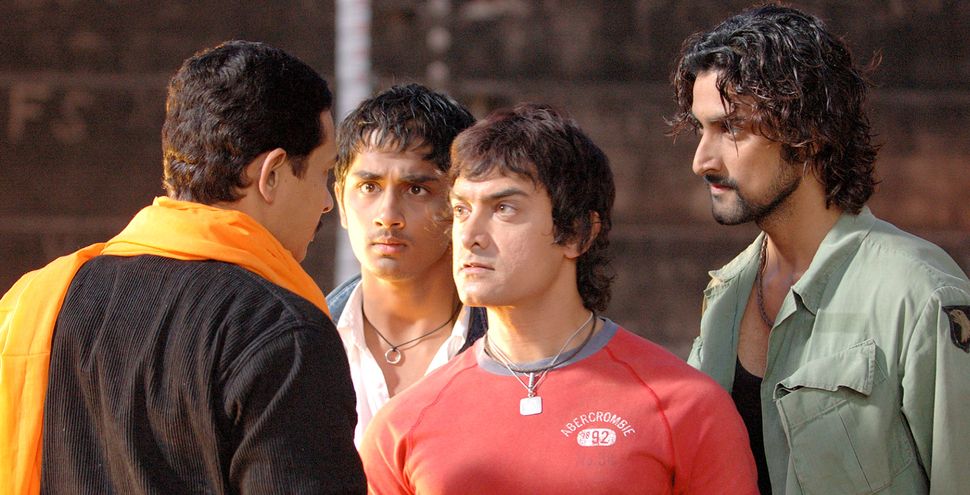
Rang De Basanti was generous to its villains. What it failed to foresee was that more than a decade later, the State wouldn’t care about evidence or declarations but criminalise the very act of protest, the thought of dissent, the assertion of criticism. It’s hard to watch the film today without thinking about the BJP government rounding up students, activists, lawyers, intellectuals and academics without any real evidence of them having committed or even instigated violence.
“It’s extremely sad that Rang De Basanti is relevant today,” Mehra said. “The film was about change and the change within. If you need change, you need to start with yourself. That didn’t happen. We’ve gone back in time, if you really ask me. It doesn’t make me happy when you mention that it’s still relevant. It shouldn’t have been relevant in today’s age.”
Seeds Of Rebellion
The idea of narrating the story through the lens of a white woman, a Britisher, making a documentary on India’s freedom fighters—Bhagat Singh, Rajguru, Chandrashekhar Azad, Ram Prasad Bismil, Ashfaqullah Khan, and Durgawati Devi—came from Mehra’s own disappointment about how little young Indians knew and more critically, cared about them. “I was utterly fascinated by how a bunch of 19-23 year olds decided to pick up guns instead of pens. There had to be a bigger ideology and I wanted to explore that.”
Mehra and writer Kamlesh Pandey had a script for a two-hour film, that included the Jallianwala Bagh massacre, Kakori train robbery and the Assembly bombings, leading up to their hanging. This draft didn’t juxtapose two timelines to blend past and present. After the script was done, Mehra and Pandey booked a banquet hall in Parel, called around 20-25 students from various colleges and spoke to them about the film.
“If at all they showed any interest,” Mehra said, “They were faking it. The subject didn’t touch them.” This was a generation that came of age at the peak of liberalisation. “They were more about Nike and Nokia. They didn’t give two hoots about history. For them it was more about what you wore, who you hung out with, who you dated and which university you were going to attend.”
Mehra was angry. “These Bombay students were very materialistic. All of them wanted to make their first million before 30. So I decided to go to Delhi to talk about the film. Those students shut down the idea in two minutes and said there were other films about Bhagat Singh being made in languages like Punjabi. How many more should you make? They said if Bhagat Singh was here right now, he would’ve joined the Army which is also corrupt. Then someone said that Kirti Azad was the grandson of Chandrasekhar Azad. I was confused and depressed. People just weren’t connecting to the idea.”
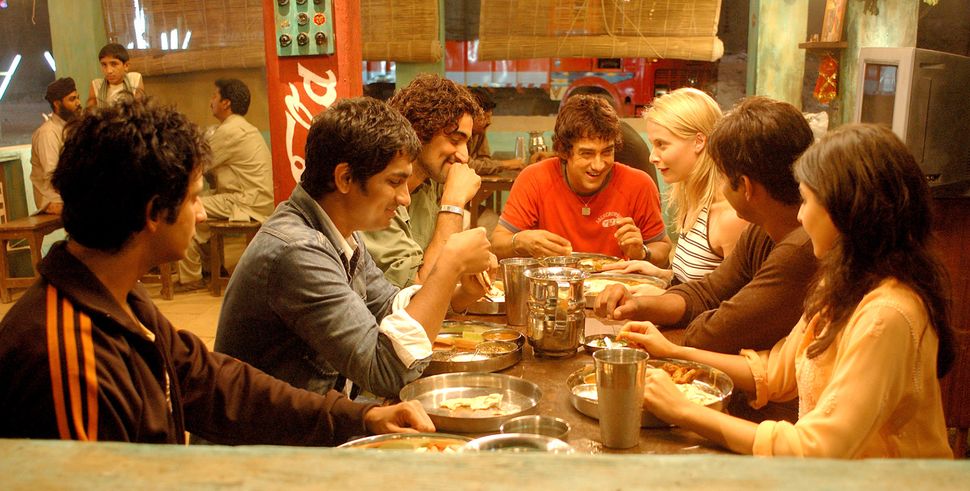
He then stepped back and realised that he needed to rethink why he was making the film.
“We went to college in Delhi University, we spoke about things not happening in the country like metro, roads, electricity. What was happening was corruption. We’d say politicians should be lined up and shot with a bullet but none of us participated in making this country better or influencing change. I wanted to be an Air Force pilot. I got rejected because you needed science and math, and I was not good at either.”
While going through these motions, it hit him. The idea to weave these real-life frustrations with himself and young people, into the narrative. When he shared this idea with Pandey, the writer came up with the idea of having a filmmaker struggling to make a film on freedom fighters. That’s how the character of Sue (Alice Patten) the documentarian, emerged, a woman who is initially frustrated with DJ and his friends, as they refuse to see the scale of sacrifice the freedom fighters made.
“All these thoughts came together,” Mehra recalled. “I picked up my 5 best friends and I wrote our anecdotes from college. From fooling around on campus to going to the Haryana border to eat parathas to getting drunk at some adda, we’d be chilling all the time and then declare that nothing is going to change about this country.”
The scene of Ajay’s (played by R Madhavan) farewell at the bar, too, was inspired by the writer-director’s personal conversations with friends.
“I planted my alter-ego in Ajay Rathod,” he said. “He had the most idealistic voice. I would always say that if you want a better country, you’ve to fight for it, participate in the process of its betterment. They’d say I was crazy. Nothing would change.”
What accelerated Mehra’s awakening to link the history to the present was a documentary he watched on NDTV called ‘Coffins in Tricolour’ about the faulty MiG aircrafts that were causing a number of casualties in the Air Force. They were dubbed ‘Flying Coffins’ by the media. This led to the then Defence Minister, George Fernandes, going on a ‘joyride’ on one of the MiG planes in a bid to declare them safe and quell the negative press.
“He wore a G-suit and looked very funny. He said he travelled and it’s very safe, if it wasn’t safe, then he wouldn’t have gotten on it. He gave some rhetoric jargon. It really got me very, very angry. I felt like shooting the guy. So I shot him in the film.”
Scoring A Blockbuster Album
From the infectious title track to the rousing Khoon Chala, from the heartbreaking Tu Bin Bataye to the celebratory Khalbali and Masti Ki Paathshaala—a song that reflected the experiences of youthful delinquency and turned into an anthem of sorts—it’s impossible to watch Rang De Basanti without delighting in its exceptional music and how seamlessly it propels the film’s narrative.
It was one of the earlier mainstream films to do away with lip-sync songs. There was no dialogue baazi as was the norm then, the film’s lines had a quiet, conversational quality that resonated with a country whose tastes were fast evolving.
In 2005, the year before RDB hit theatres, the highest-grossing films were No Entry, Bunty aur Babli, Salaam Namaste and Garam Masala, commercial potboilers with an overbearingly bright colour palette and an entire album set to heavily choreographed lip-synced songs.
RDB subverted that popular trope, instead giving a rousing album without any choreographed numbers. “The first thing I did after locking the script was meet A. R Rahman. We met about three years before the film’s release. Even before my first film Aks. We started work on the music instantly, after I met him in London and gave him an idea about the movie. He heard it out, agreed to do it. We even recorded a track that night which was used in the film’s climax.”
Interestingly, the film’s dialogues were originally penned in English by Rensil D’Silva and then translated into Hindi by Prasoon Joshi, who also wrote the film’s lyrics. It’s ironic that Joshi, now the CBFC chairman, is firmly on the ruling party’s side, their poet-in-chief, writing government jingles and BJP campaign songs.
To get the music right, Mehra took 23 trips to Chennai in 50 days—Rahman prefers to record in the night—sleeping and eating on the flights and working the rest of the time. Before the film went on floors, Mehra had to pump in his own money to keep the pre-production work as his international partners, after promising to come on-board, didn’t quite deliver on the money. He mortgaged his Mumbai apartment to Citibank for a sum of 80 lacs, which took care of 2 months of production work.
“A friend of mine took me to a moneylender and he gave me a loan of Rs. 2 crore at 48% interest. I thought I could pay back as soon as the producers paid me money but it never happened. It must have sounded foolish but instinctively it felt correct to me.”
Eventually, Ronnie Screwvala came onboard and bailed Mehra out and the film went on floors in early 2004.
“Everything was happening simultaneously. Rahman was under a lot of pressure as we all were.” the director recalled. Despite battling a severe jaundice infection right at the onset, the director powered through the initial days of the shoot, the day 1 of which happened to be at the Golden Temple.
And despite some stray hiccups, the multi-city shoot that took place across Mumbai, Delhi and Punjab went off smoothly.
Until one night when Mehra realised something was off.
Aamir Khan was getting married on December 26, 2005 to Kiran Rao. Mehra woke up, panicky, on December 23, with the realisation that there was something wrong with the film. For the climax, they had shot an elaborate scene of the boys lying dead and some 4,000 Delhi University students carrying them on their shoulders in a procession that crawls through the streets of Delhi. “But I realised that the scene wasn’t working for me. It was the most expensive scene of the film but it just wasn’t working.”
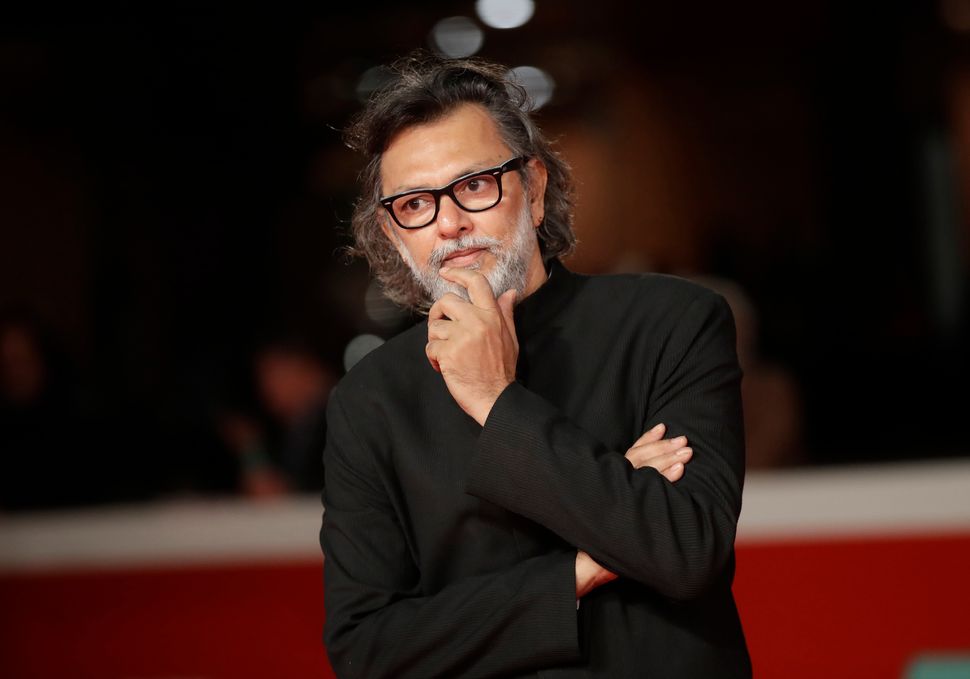
Finding A New End
Days before the film’s release, Mehra decided to rework the climax. On a whim, he called Radhika Roy, co-founder of NDTV. He wanted the ending of the film to include youngsters across the country protesting against corruption and demanding accountability and an actual news channel covering it.
Mehra flew down to Bengaluru and headed to an engineering college. The NDTV crew joined him there. When the van came, the students gathered around. They were told that some Delhi students had taken over All India Radio and the commandos were firing at them. “The students then started on their own. I didn’t have to script it. They said ― how can they do that? There’s so much corruption! There was so much in them that was naturally coming out. I went in and told them that this is for a film but it didn’t matter to them. The material I was getting was amazing. The climax was finally taking shape.”
Mehra then deployed his assistant, Sunil Pandey, to do a similar shoot at Kolkata, Guwahati and Lucknow while he headed to cover Kashmir, Delhi, Mumbai, Bengaluru and Ahmedabad. In the next four days the skeletal crew covered 8 cities. “NDTV was very helpful. We shot the newsroom in Mumbai and stitched it together. Nobody, absolutely nobody other than my core team, knew that I was doing this.”
In the film’s bloody climax, we never actually see the characters dying. The scene freezes: the characters are smiling, throbbing with life.
Talking about how the scene came about, Mehra said, “There was a very strong impression in my head of the 1969 movie Butch Cassidy and the Sundance Kid. In the end they come out shooting against 2,000 guys and the screen freezes. I was always fascinated by this idea of depicting death by not showing it. So I froze that shot. We started intercutting it with all the shots we got from other cities and put it together. The fire we lit had spread.”
Mehra didn’t show up at Aamir Khan’s wedding. “I sent my six-year-old daughter and asked her to tell Aamir uncle that she was representing me.”
The White Saviour
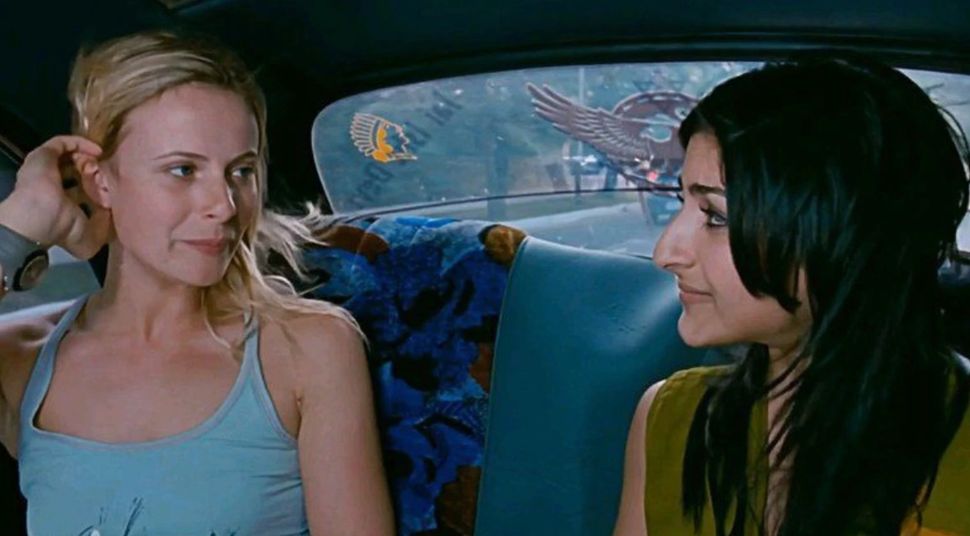
One of the critiques of the film is how it uses a white person, a Britisher, to trigger a moral awakening in Indian youth. Although a scene at the midway mark in the film shows Aslam’s character calling Sue out for how easy it is for her to lecture them on India, not knowing their specific realities, she’s still the character that propels the story forward, a key conduit between the past and the present.
Mehra says that, for him, she was an umbilical cord with the British. “Why should the British not feel that they were the oppressors? Why shouldn’t one of them turn around and say that they indeed were the oppressors and do something about it? When a white person watches the film, they see it with a very different perspective.”
His other motivation was to make the film more universal and accessible to an international audience. “I don’t make films just for India. I make it for the world. There’s a difference between Indian and world cinema. I’m trying to build this bridge without adopting the grammar of Western cinema and without chasing film festivals.”
While RDB did exceedingly well at the domestic and the international box-office, it’s hard to gauge how much of a global impact the film had. As surprising as it may sound, the first thing that Mehra did after the film’s success was sign up for a class on screenplay writing. Sure of his directorial skills, thanks to his advertising background, it was writing screenplays that he struggled with.
He called up Syd Field, a bestselling American writer often labelled as the ‘guru of screenwriters’, and asked for private tuitions. Field’s wife answered the phone and said that he had a packed schedule but would be taking a workshop in Venice that Mehra could sign up for.
But the director was insistent and after much cajoling, got Field on the phone. “Mr. Syd, I’ve learnt a lot from your books and I want to learn more about screenplay writing from you in person,” Mehra told him. Field said his private classes would cost $5,000 and that Mehra wouldn’t be able to afford him.
“I told him I’ve just released a movie, it’s a blockbuster and I’m a rich man.”
Mehra flew down to the US. The classes went on for 21 days. During this time, the two men struck a deep friendship. “He gave me his garage, I’d make his coffee every morning and he would come and teach me one-to-one. Every penny was worth it.”
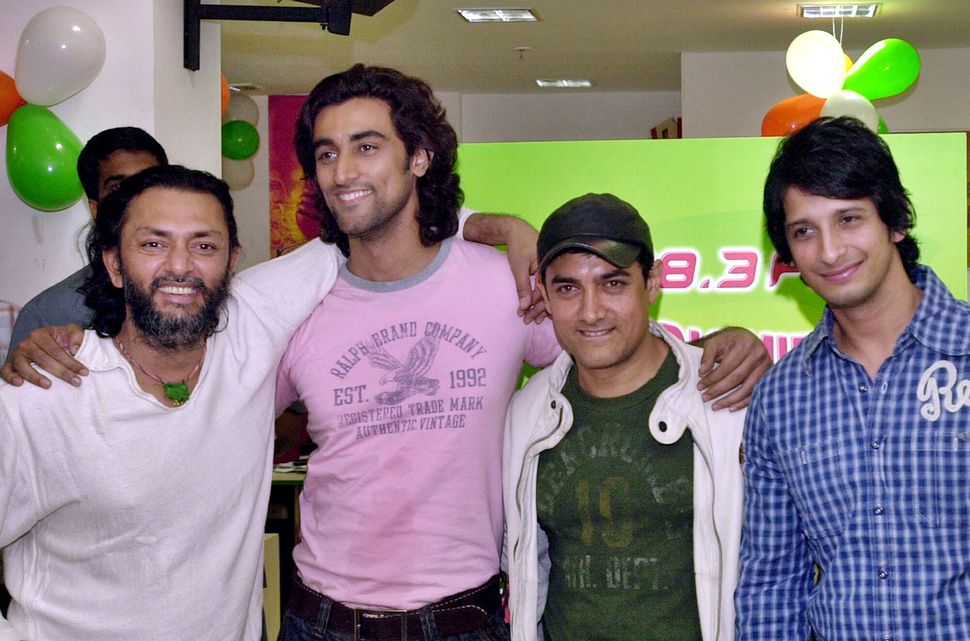
The Million Dollar Question
The current socio-political climate, where the tacit and active consent of the State has lent legitimacy to views that many were embarrassed to share before, has been bothering Mehra. What was used as a subplot in Rang De Basanti is the main story in India today.
“Politics has become religious, two things that should’ve never met,” he said. “Patriotism has been reduced to jingoism which has been reduced to rhetoric. The agenda of the government cannot be religious.”
The filmmaker says he’s a ‘proud Hindu’ who has always seen Hinduism as a way of life.
“We have a strong heritage of religion. You don’t need to feel insecure. As a follower of Hinduism I feel I get my strength from not being threatened by other religions. The moment you get threatened and you say I want to win something, that means you could lose it too.”
While the BJP government has exploited the communal divide, Mehra says it’s been done before by other governments too. “Because it isn’t just about the government and the political leaders, it’s about the people of the country that make it. For me it’s easy to raise a finger at the current regime but the broader reality that has now been exposed is that the collective consciousness of this nation has always believed in segregation, in the caste system.”
Which brings us to the question that arises every time RDB celebrates a milestone. Does he feel, at a time when even the imagined transgressions of a fictional queen can invite the wrath of the far-right, that he can still make a Rang De Basanti today?
Mehra takes a deep breath.
“Yes,” he says.
“Because I don’t think cinema and storytelling is about being politically correct. For me it’s about being emotionally correct. If I have to be politically correct every time, then I should join politics, not make movies.”